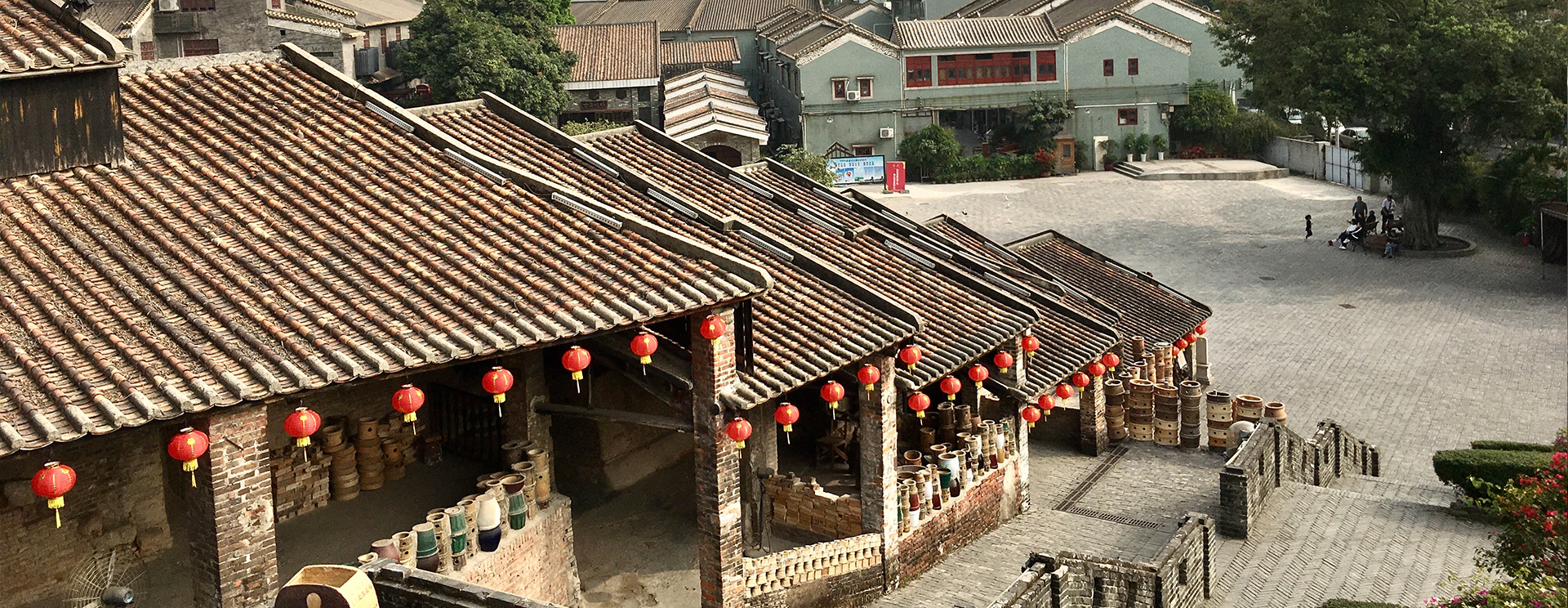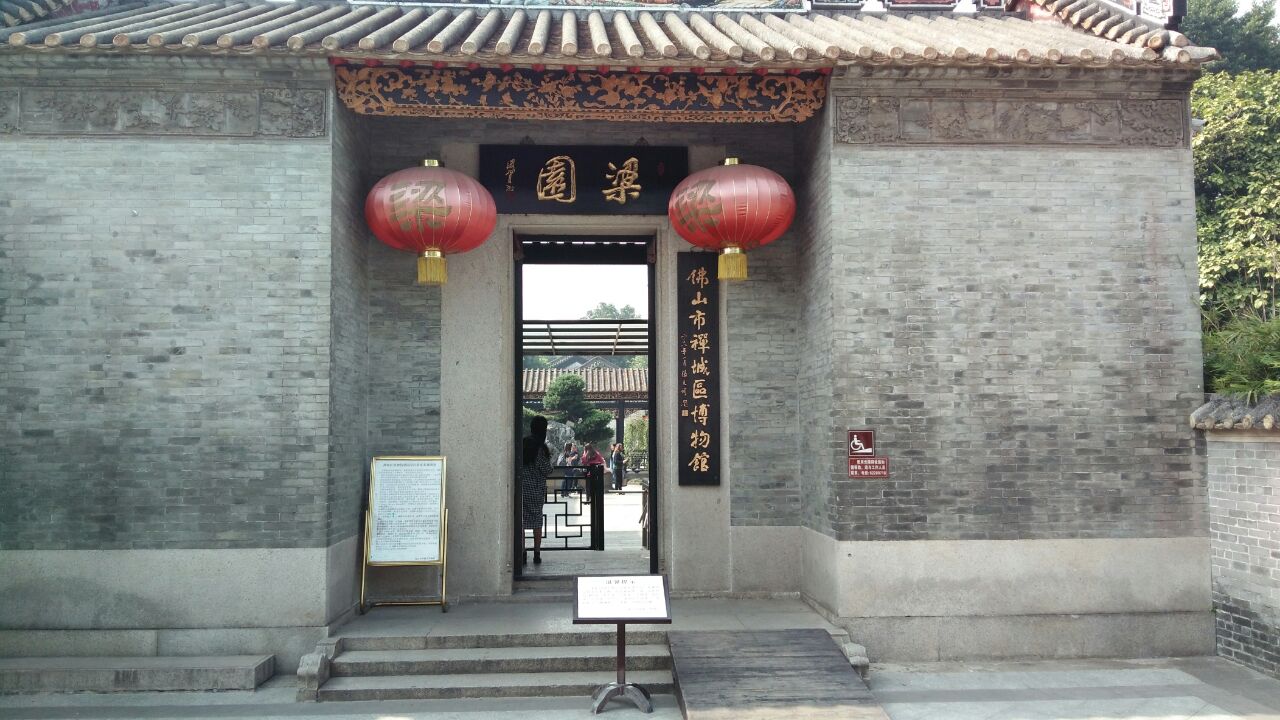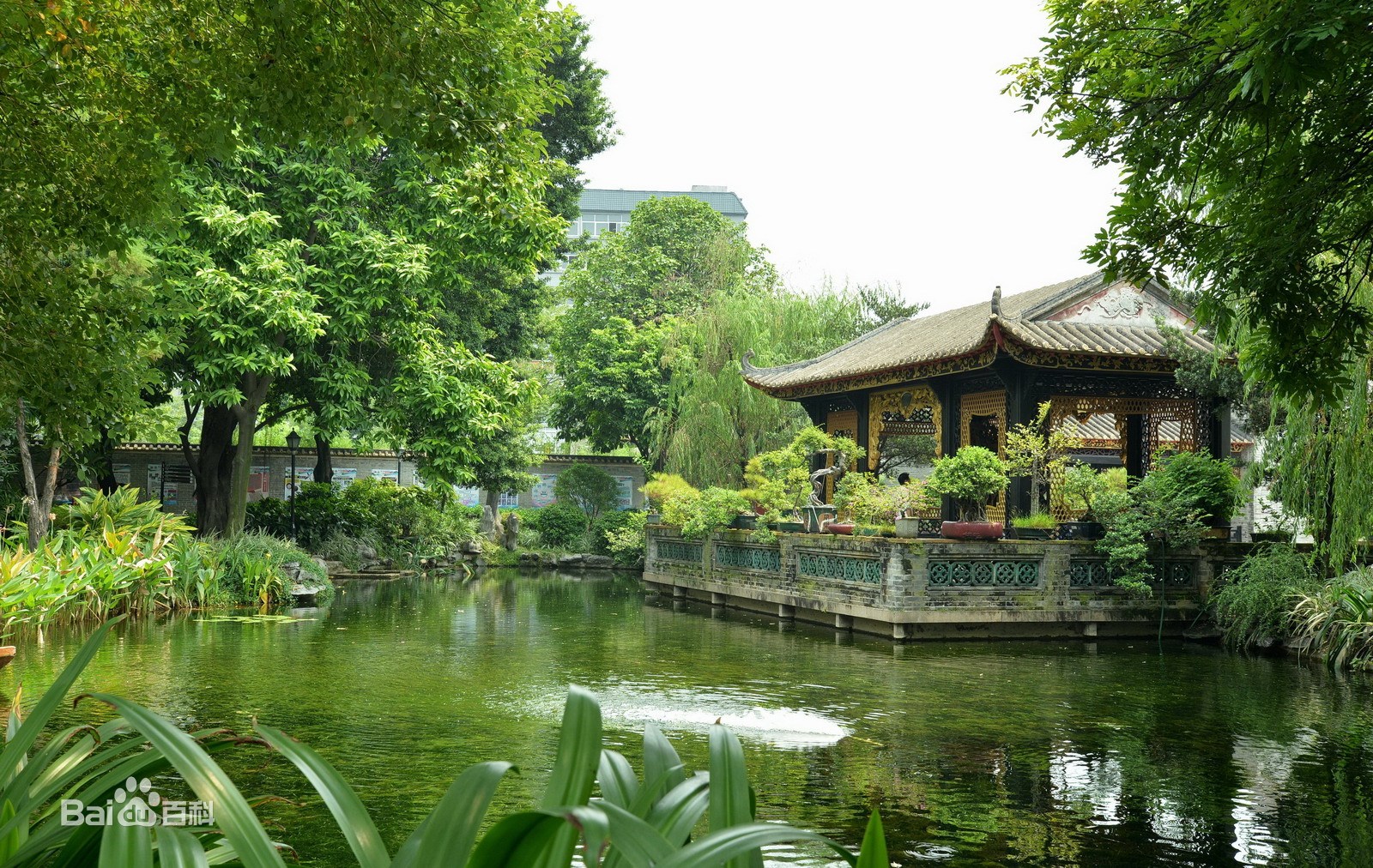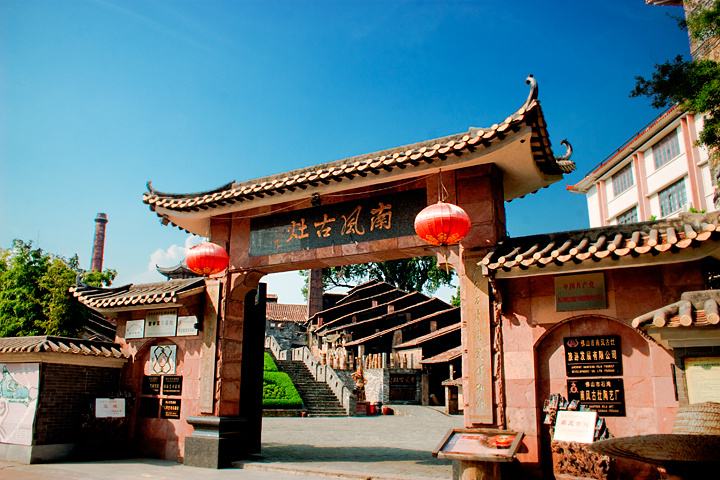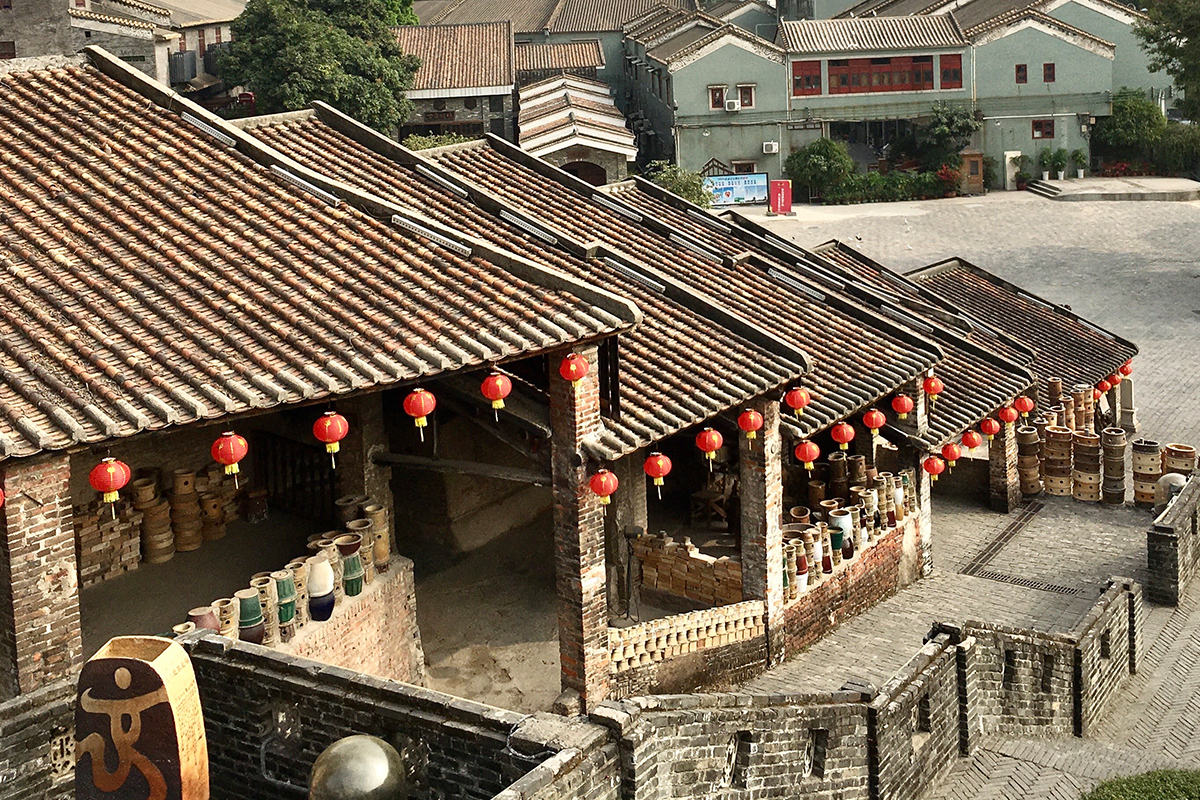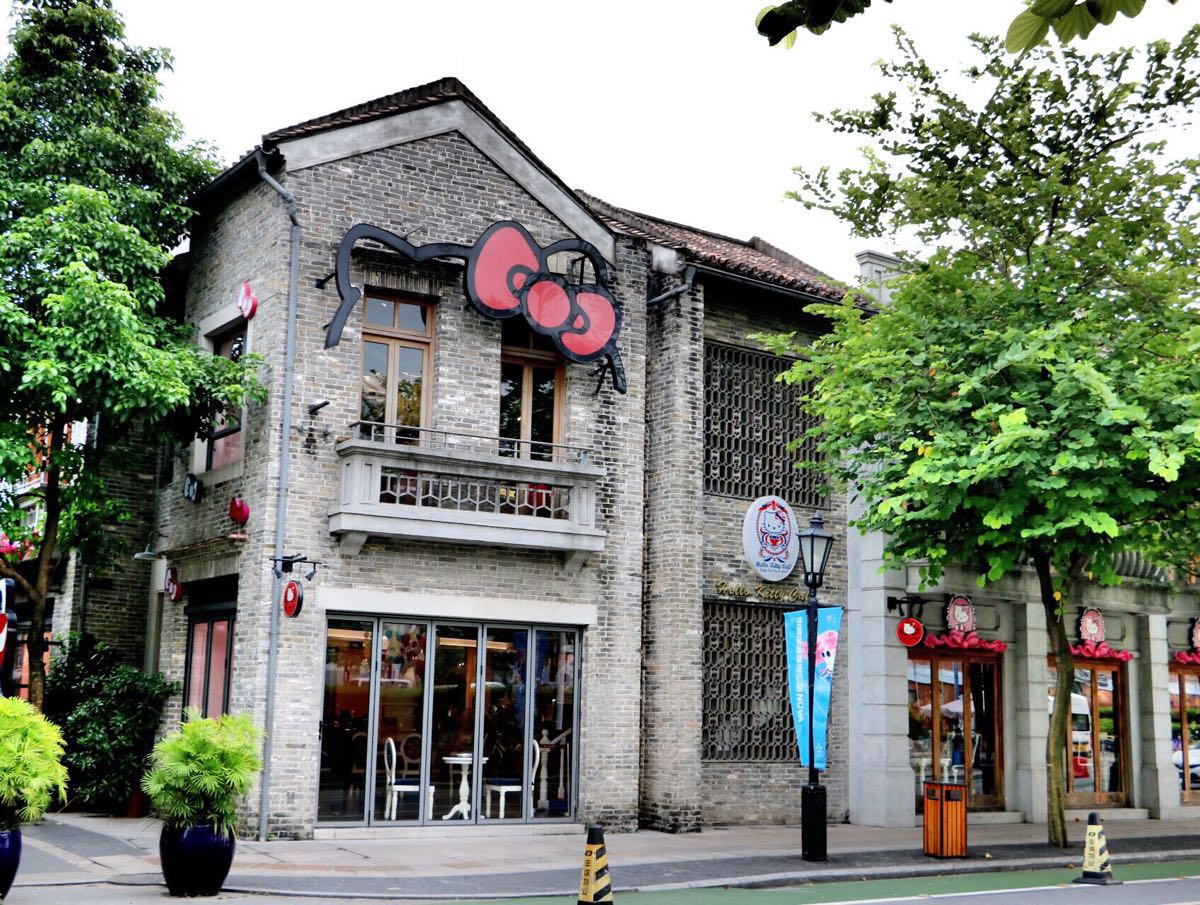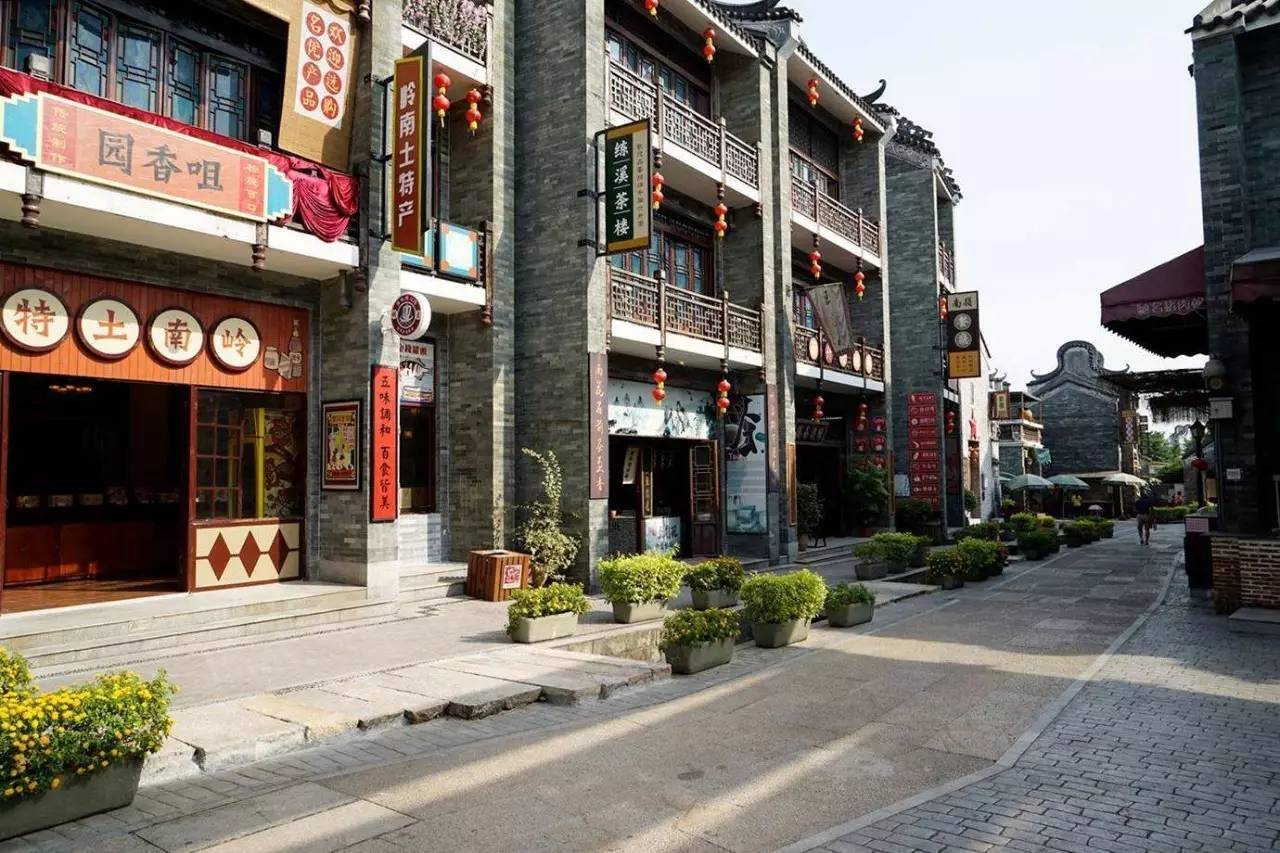Local Attractions
Local Attractions
Renshou Temple
Renshou Temple
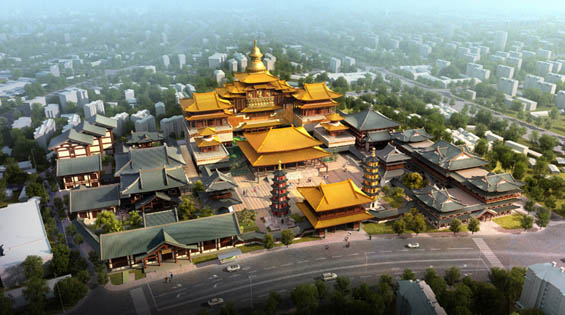
The Renshou Temple was first built by the Tantric Master Zhongtang in the 13th year of the Emperor Shunzhi’s Reign of the Qing Dynasty (AD 1656). It is located in Zumiao Road, Chancheng District, Foshan City.
In the 8th year of the Emperor Kangxi (AD 1669), monk Yulin rebuilt the mountain gate. In the first year of the Emperor Xianfeng (AD 1851), monk Renji rebuilt it again. After several renovations, Renshou Temple has expanded in scale. The Ruyi Pagoda in Renshou Temple was built in 1935 with the donation of Li Peixian, a Buddhist disciple of Tantrism in Foshan, and the grand opening ceremony was personally presided over by monk Xuyun in 1938. This tower is quite unique. The body of the tower is a seven-storey tower in octagonal form and Han style, inlaid with Tibetan steles and plaques. There are more than ten porcelain Buddha statues inside the tower. Among them, the ceramic red and green Tara Buddha statues are the masterpiece of ceramic kiln of Shiwan Guanhua, which were hand carved by Pan Yushu, a famous ceramic artist in Shiwan.
Zumiao
Zumiao
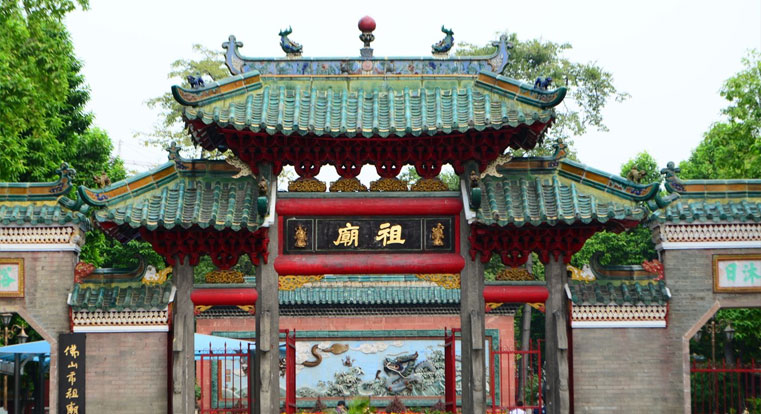
The Zumiao Temple, also known as Foshan Zumiao Museum today, is located at No. 21, Zumiao Road, Chancheng District, covering an area of 30,200 square meters. It is a National Key Cultural Relics Protection Unit, a National AAAA Tourist Attraction, a Patriotism Education Base in Guangdong Province, a Chinese Culture Inheritance Base in Guangdong Province, and one of the demonstration sites of ten civilized tourist attractions in Guangdong Province.
The Foshan Zumiao Museum is a folk museum integrating the ancient architectural art of the Ming and Qing Dynasties and the traditional culture of Foshan. Its coverage includes the ancient architectural complex of Zumiao, Confucius Temple, Huang Feihong Memorial Hall, Ip Man Hall, etc.
The Zumiao Temple, dedicated to the Supreme Emperor of the Dark Heaven, Zhenwu of the North Pole of the Taoism, was built in the Emperor Yuanfeng’s Reign period of the Northern Song Dynasty (AD 1078-1085). It is a key cultural relics protection unit in China. The Confucius Temple was built in the third year of the Emperor Xuantong of the Qing Dynasty (AD 1911). It was a place to honor Confucius at the end of the Qing Dynasty and the beginning of the Republic of China. It is a cultural relics protection unit in Foshan City. Huang Feihong Memorial Hall and Ip Man Hall were built and opened to the outside in 2001 to commemorate Master Huang Feihong and Ip Man, famous martial artists from Foshan.
The cultural relics inside Foshan Zumiao Museum are mainly Taoist and Foshan local folk cultural relics. Our museum exhibits and fully displays Taoist culture, martial arts culture, Foshan folk art and other folk cultures. Every year, we hold far-reaching folk cultural activities such as Spring Festival Blessing, March 3 of the Chinese Lunar Calender that commemorates Northern Emperor’s Birthday, Township Drinking Ceremony, Spring and Autumn Festival and so on. The museum also holds folk culture dynamic display activities such as Confucius Temple Schoolchildren’s Pen Opening Ceremony, Huang Feihong Lion Dancing Performance and Cantonese Opera Performance for many years, and continuously enriches the display and exhibition resources by introducing and hosting high-level and high-quality exhibitions. In terms of academic research, in recent years, our museum has published workings including Center and Symbol - History, Art and Society of Foshan Zumiao Temple, Foshan Zumiao Temple, Ancient Porcelain Styles and Legend of Zumiao Temple.
Liang’s Garden (Guangdong Provincial Key Cultural Relics Protection Unit)
Liang’s Garden (Guangdong Provincial Key Cultural Relics Protection Unit)
Liang’s Garden is the general name of Liang’s residence garden in Foshan and the representative work of Lingnan Garden. It has become one of the Four Lingnan Gardens, together with Yuyin Garden, Qinghui Garden and Keyuan Garden. Liang’s Garden is mainly composed of many groups in different places, such as “Twelve Stone Room”, “Qunxing Thatched Cottage”, “Fenjiang Grass Reed”, “Hanxiang Pavilion”, etc, where the main body is located on the Xianfeng Ancient Road of Songfeng Road.
Liang’s Garden was successively built by local famous poets, namely, Liang Airu, Liang Jiuhua, Liang Jiuzhang and Liang Jiutu’s uncles and nephews, a group of four. It lasted for more than 50 years during the years of the Emperors Jiaqing and Daoguang of the Qing Dynasty (AD 1796-1850).
Liang’s Garden is one of the typical representatives of Lingnan Literati Gardens in the Qing Dynasty. Houses, where ancestral halls, temples and gardens are integrated. Lingnan-style gardens change in space one after another. The landscaping group was not limited to the pattern and pursued elegance and nature. The garden is shaded with fruits and trees, which is rich in Lingnan water and country characteristics.
Ancient Nanfeng Kiln
Ancient Nanfeng Kiln
The Ancient Nanfeng Kiln Tourist Area is located in Shiwan, the famous ceramic capital of southern China, integrating tourism, sightseeing, production, art learning, discussion, participation and shopping.
The scenic spot is a National AAAA Tourist Attraction established around key cultural relics protection units such as Nanfeng Stove, Gao Kiln, Gao Temple and Lin’s Family Hall.
“Give me a whole day and I shall show you a tour of a thousand years”. Inside the Ancient Nanfeng Kiln Tourist Area, the traditional crafts essence, such as the carving of the mountain Gong, the ancient car throwing, the large cylinder and the straw sandals, are gathered together, so are the the essence of folk arts including collection of lion dance, martial arts, Cantonese Opera and paper cutting, etc. Every day, it attracts people to come here and find the roots and souls in this holy land of world pottery culture and experience broad and profound Chinese culture.
In December 2019, the Ancient Nanfeng Kiln was recognized as the third batch of National Industrial Heritages, with core items: main structures of Nanfeng Kiln and Gao Kiln, Shiwan Dragon Kiln (including foundation, kiln head, kiln chamber, kiln tail and kiln shed).
The Ancient Nanfeng Kiln Tourist Area has Ancient Nanfeng Kiln and Gao Kiln, which are national key cultural relics under protection and known as living ceramic fossils. The kiln fire has been continuous and the production has not been cut off for 500 years. It is rare in the world and has been recorded in the Guinness Book of world records.

